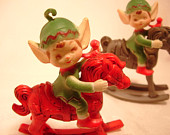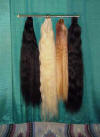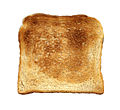You may be busy like the little elves…

but remember to take the time to enjoy your horses!
22 Thursday Dec 2011
Posted in Uncategorized
You may be busy like the little elves…

but remember to take the time to enjoy your horses!
21 Wednesday Dec 2011
Posted in Uncategorized
In yesterday’s post, I talked about how I teach. Those of you with a background in Centered Riding, and those of you who are fans of Jane Savoie may have noticed that I mentioned nothing about visualization.
It wasn’t an oversight. I know that there are riders who learn by seeing and imagining. I feel I can help the first group much more than I can help the second group.
I do demonstrate things, for those who need to see how something is supposed to look. I’ll show riders how I want their hands to look, by putting my own in position. I demonstrate posture. And I’m happy to hop on a horse to show riders what I’m looking for, and what their horses can do, although I seldom get asked to by students who don’t have their horses in training with me. I think that’s good, because what matters is how they can ride their own horses, not how I can.
Every month, I get my copy of Dressage Today in the mail, and every month, I look at the last page, where the visualization feature appears. They call it “solutions,” but it’s all about imagining things. I don’t know why they don’t call it “imagine,” but I guess I’m too literal minded.
 “Imagine your transitions as snowflakes,” instructed the September issue. It’s hard for me to move past this phrase to get to what I imagine is the heart of the instruction, because I am unable to imagine my transitions as snowflakes. I just can’t do it. I’ve tried. I just can’t. Snowflakes have nothing to do with my body, my aids and how the horse responds. At least not in a way that makes any sense to me.
“Imagine your transitions as snowflakes,” instructed the September issue. It’s hard for me to move past this phrase to get to what I imagine is the heart of the instruction, because I am unable to imagine my transitions as snowflakes. I just can’t do it. I’ve tried. I just can’t. Snowflakes have nothing to do with my body, my aids and how the horse responds. At least not in a way that makes any sense to me.
20 Tuesday Dec 2011
Posted in Training
Words work for me (as you’ve probably noticed) so I talk when I teach. I use the ten minute warm up of every lesson not only to talk theory but also to “check in” with horse and rider. While I observe the horse, I talk to the rider. How have the rides been since the last lesson? Have there been any struggles or difficulties? Is there anything in particular the rider would like to work on?
While I’m talking, I’m walking. This helps me stay fit, keeps me warm in the winter months, prevents me from having to shout, and most importantly, allows me a varied viewpoint. If I’m not planted in a corner or in the middle of the ring, I’m able to see more, so I’m able to help more.
Plus, it’s the only real way to check the straightness of horse and rider. My riders may not be ready for the Olympics, but there’s a reason why there are so many judges, all seated at different points around the ring, at international events. The plain fact is that no matter how good a trainer’s eye might be, it’s not going to be very good if its focus comes from a single position.
20 Tuesday Dec 2011
Posted in Uncategorized
19 Monday Dec 2011
Posted in Uncategorized
18 Sunday Dec 2011
Posted in Sunday Photos
 This photograph was taken many years ago, from a window in a loft in Williamsburg, Brooklyn, long before it was home to the hip and rich. My friend Ken McKay took the picture when he lived there with my Yankee-Irish horse whispering boyfriend. The loft was on the sixth floor, and the glass of the window was punctuated by bullet holes but that didn’t stop Ken from seeing the beauty outside it.
This photograph was taken many years ago, from a window in a loft in Williamsburg, Brooklyn, long before it was home to the hip and rich. My friend Ken McKay took the picture when he lived there with my Yankee-Irish horse whispering boyfriend. The loft was on the sixth floor, and the glass of the window was punctuated by bullet holes but that didn’t stop Ken from seeing the beauty outside it.
Now, Ken’s photographs are part of a group show entitled “Old Williamsburg,” featuring photographs from the early 80s (that’s 1980s) through the 90s. This just goes to show that old is a relative term, which makes some of us feel rather cozy and warm, as we should around the holidays.
The show is at The Brooklyn Ale House, at the corner of N. 8th and Berry streets. You can catch it there any day until whenever, from 3pm to 4am (it’s Williamsburg, after all, where you can get carrot-ginger soup and lots of other things that might catch your fancy, at all hours of the day and night).
If you make the trek, or you find yourself there, visit my favorite restaurant anywhere in New York City: Diner. It’s within walking distance.
17 Saturday Dec 2011
Posted in Uncategorized
 From time to time, when I was growing up, my mother would relate an anecdote about something that happened on the day I was born. My father had brought a beautiful bouquet to my mother’s room in the hospital, and when one of the nurses saw it, she exclaimed, “Mrs. Grumman, those flowers are so beautiful, they almost look artificial!”
From time to time, when I was growing up, my mother would relate an anecdote about something that happened on the day I was born. My father had brought a beautiful bouquet to my mother’s room in the hospital, and when one of the nurses saw it, she exclaimed, “Mrs. Grumman, those flowers are so beautiful, they almost look artificial!”
 Just like fake tails. Which for show hunters are now de rigeur. Bring me my smelling salts, please…and take me back to a time when there was taste.
Just like fake tails. Which for show hunters are now de rigeur. Bring me my smelling salts, please…and take me back to a time when there was taste.
One of our most accomplished hunter trainers has been quoted as saying, “When a horse walks in and doesn’t have the right tack on, is wearing a saddle pad that’s inappropriate, doesn’t have a fake tail, is not beautifully braided, or isn’t wearing well-oiled tack, it doesn’t look well turned-out.”
Hey, wait a minute, I say. Let’s talk about beautifully braided. What happened to a mud knot? It used to be that, years ago, or maybe eons ago to the juniors, horses without much of a tail would come into the hunter ring in a mud knot, or as they refer to it across the ocean, a mud tail. In my book, that’s part of the “beautifully braided” standards you refer to, and which we aspire to, in the hunters. Or it should be. It once was, not all that long ago.
16 Friday Dec 2011
Posted in Inspiration
Sometimes, life with horses feels like a high wire act. There’s excitement, always an audience with an opinion, and everything to lose.
Those things never stopped Philippe Petit. Because the high wire was the place he nurtured his creativity.
Recently, Philippe Petit gave an interview on the Colin McEnroe show on NPR, along with Paul Winter, the musician who lives near me, and local sculptor Anne Cubberly (both of whom are inspired by animals). You can listen to the audio here (Philippe is on from 3:40 to 10:15 and the entire audio cast is about 50 worthwhile minutes).
As I listened to Petit’s words, they resonated for me as a horse trainer.
“Creativity is a very thick book that is written every day.”
“If I think that progress will come from pure repetition, I’m fooling myself.”
“The fire within comes from your heart and your brain, powered by passion.”
15 Thursday Dec 2011
Posted in Training
The other day, I was discouraged about some things going on in my life, and I called my sister. My teenaged niece Sam picked up the phone, and I shared my woes with her.
 She listened and then said, “Have a piece of toast.”
She listened and then said, “Have a piece of toast.”
“I never thought of that,” I said.
“Most people don’t,” she said.
Sometimes, things just don’t work the way we want them to, in life, or with our horses. When it happens while I’m schooling a horse, it could be soreness or illness or boredom or the schedule might need adjusting (too many workdays or not enough). Or the horse might just be having a bad day. They have them, just the way we do.
14 Wednesday Dec 2011
continued from yesterday…
I’ve been “going to the gym” with my young warmblood, right in his stall, while we do the exercises in Hilary Clayton and and Narelle Stubbs’ book and DVD, “Activate Your Horse’s Core.” Our routine includes carrot stretches, back lifts and leg stretches. Yesterday while we were at the gym, out of the blue and without my asking, my horse lifted his left knee, as he might in passage, so I could give him his stretch.
While I held his knee and stretched it towards me for the 20 seconds that makes it work, his head was right over mine. Out of the blue and without my asking, he decided to move his head to the left, right over mine, and stretch his neck as far as he could to one side. Then he lifted his head over mine again and stretched his neck as far as he could to the other side. He repeated it, for two reps per side.
I certainly didn’t ask for this behavior. He simply offered to improve the exercise. And I think he did. I may be biased, but I think we should suggest this improvement to Hilary and Narelle, for the next edition of their book. My horse’s inventiveness delighted me. I was happy he offered me something that neither I nor, in all likelihood, Hilary or Narelle had considered.